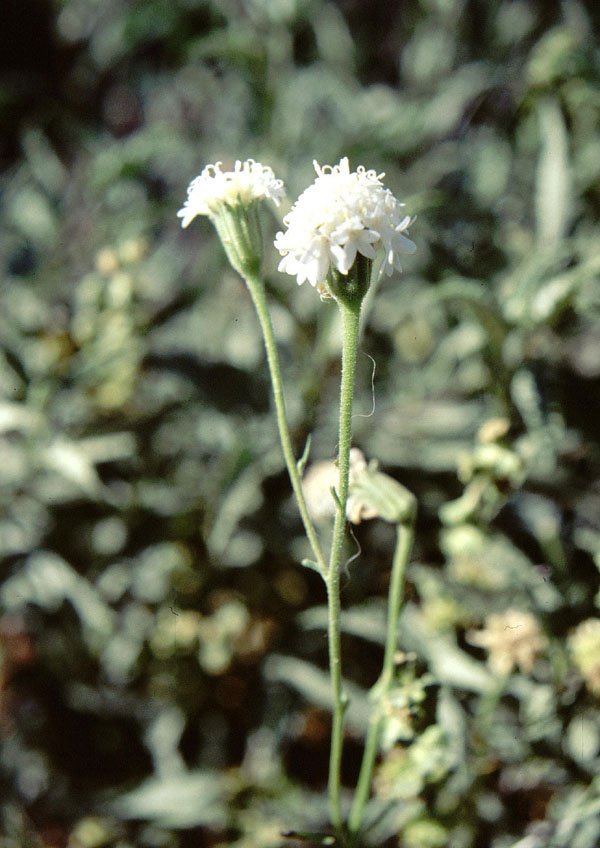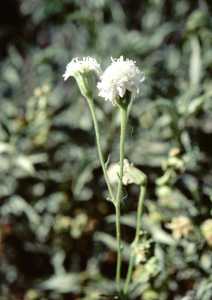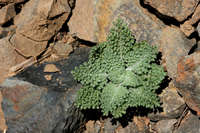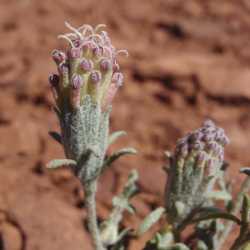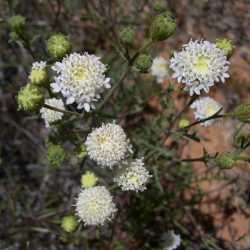Annuals, biennials, perennials, or subshrubs, (2-)5-70(-200) cm (taprooted). Stems erect to prostrate, usually branched. Leaves basal and/or cauline (smaller and sparser distally except in C. cusickii); alternate; usually petiolate; blades deltate, elliptic, linear, oblanceolate, or ovate (plane or ± 3-dimensional), (0-)1-4-pinnately (rarely -subpalmately) lobed, ultimate margins entire, faces glabrous or hairy, often stipitate-glandular or gland-dotted. Heads discoid or ± radiant, borne singly or in (terminal) ± cymiform arrays (erect in bud except C. macrantha). Involucres hemispheric to obconic or broadly cylindric, (3-)5-15[-25] mm diam. Phyllaries 5-21+ in 1-2(-3) series (subequal to unequal). Receptacles convex to ± flat, pitted and/or knobby, usually epaleate (paleae 3-10+ in C. carphoclinia). Ray florets 0 (sometimes simulated by enlarged peripheral disc corollas). Disc florets 8-70+, bisexual, fertile (diurnal with anthers exserted except in C. macrantha); corollas white, pinkish, cream, or yellow, tubes shorter than cylindric or funnelform throats, lobes 5, deltate to ± lanceolate (sometimes enlarged, unequal; style-branch appendages blunt, obscure). Cypselae clavate to ± cylindric or compressed, obscurely 8-20-angled, faces scabrous and strigose to densely sericeous (usually eglandular); pappi usually persistent, of (1-)4-20, distinct, ± erose scales in 1-4 series (equal or unequal, outer then shorter, scales usually fewer and/or shorter on peripheral cypselae, midnerves obscure), sometimes 0 or coroniform. x = - (n = 6, 8, plus polyploids and dysploid numbers).
Section Acarphaea is distinctive by its farinose indument and base chromosome number of 8, among other traits; it could prove to be a separate, convergent genus. Natural and artificial hybrids have been documented among some members of sect. Chaenactis (see further dis-cussion there). Reports of hybrids among species of the other two sections are few and doubtful. Chaenactis appears to be most closely related to the monotypic Dimeresia and Orochaenactis, which B. G. Baldwin et al. (2002) treated together as a narrowly circumscribed tribe, Chaenactideae.


